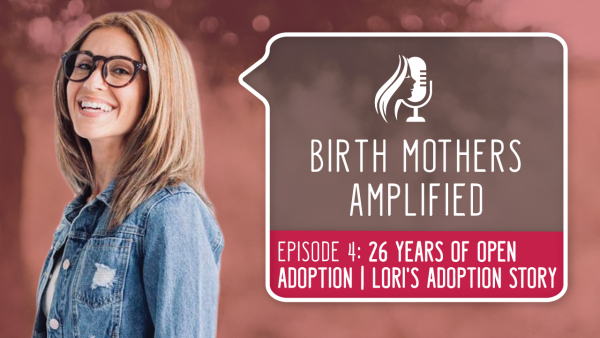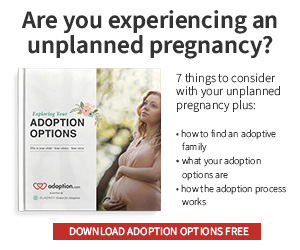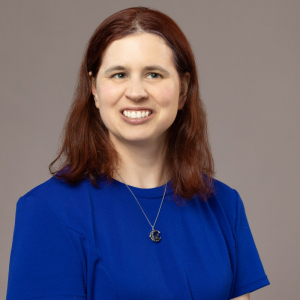Are you a birth mother, an adoptive parent, or an adoptee? Do you wonder what other birth mothers’ experiences are like? Do you just want to learn more about adoption? If you answered, “yes” to any of these questions, I encourage you to check out Birth Mothers Amplified, a new podcast on YouTube.
About the Podcast
Birth Mothers Amplified is a podcast brought to you by the Gladney Center for Adoption and Adoption.com. It is hosted by two awesome birth mothers, Emma and Muthoni. The podcast covers topics related to adoption and being a birth mom such as open adoption, closed adoption, transracial adoption, and what it’s like to be a birth mother. The podcast aims to raise awareness about adoption and birth mothers and provide birth mothers with support and resources.
Emma is a birth mother who faced an unexpected pregnancy when she was 17 years old and a senior in high school. She was fortunate to have a mother who was also a birth mother. The birth father was also very involved in supporting Emma throughout her pregnancy. Emma placed her baby with an open adoption.
When Muthani became unexpectedly pregnant, she knew she wasn’t ready to be a parent yet, so she decided to place her child for adoption. She also placed with an open adoption and continues to be part of her child’s life. Muthoni has been part of many birth mother panels where she speaks to others about her experience.
Birth Mothers Amplified – Season 1, Episode 4
In Birth Mothers Amplified season 1, episode 4, Emma and Muthoni talk to a birth mother named Lori who placed her child for adoption 26 years ago in 1994. Lori is now married, has two daughters, and is about to be an empty-nester.
When Lori was in high school, she found herself facing an unexpected pregnancy with nobody to talk to. One day, early in her pregnancy, Lori looked up a number in the yellow pages and called it when her boss had left the room. Lori spoke to a kind woman who said she could help her. Lori began to tell the woman her story, but her boss came back into the room suddenly and she had to hang up the phone.
Lori knew she couldn’t hide her pregnancy for long. She decided to tell her family she was pregnant at her sister’s birthday party because the whole family was there to celebrate. Lori says she feels bad for her sister because she upstaged her.
Lori’s family was shocked to hear the news. They discussed what to do before they spoke to Lori. They gave her the name and number of a counselor in the area for Lori to call for help. At the time, Lori didn’t know the counselor was connected to an adoption agency.
Lori called the number and the counselor ended up being the same woman Lori had called in secret at her job a few months before! The counselor recognized Lori’s voice immediately. Lori met up with the counselor and was finally able to get everything off her chest.
The counselor explained all of Lori’s options to her, including parenting and adoption. She also mentioned a new thing called open adoption. It was the end of 1993 and open adoption in those days was not at all common.
Adoption Types
For those who may not know, there is a difference between closed, semi-open, and open adoption. In a closed adoption, the birth mother’s and adoptive family’s contact information and identifying information, such as last names, are not shared with each other. A birth mother can still choose the family she wants to place her child with but after placement occurs, the birth mother and adoptive family do not share a relationship. This type of adoption was very common in decades past.
Semi-open adoptions are relatively new; they have only become popular within the past couple of decades. In a semi-open adoption, birth parents and adoptive parents can contact each other but their identifying information isn’t shared. In a semi-open adoption, birth parents and adoptive parents can contact one another through a third party, such as the adoption agency or lawyer. For instance, adoptive parents can send letters and photos to the adoption agency and then the agency will forward the letters and photos to the birth mother.
Birth mothers may choose this type of adoption to watch their children grow up from a distance. Some birth mothers believe that if they do not have intimate contact with their child, it will be easier to heal after placement. Adoptive parents may choose this type of adoption if they want their adoptive child to be able to have contact with their birth mom but maintain their privacy at the same time.
In an open adoption, identifying information about the birth parents and adoptive parents is shared, and the birth parents and adoptive parents can contact each other directly both during and after the placement process. Open adoptions can look different based on what the birth and adoptive parents in each case want.
The birth parents and adoptive parents may talk on the phone and/or email regularly and even visit one another during and after the placement has occurred. No two open adoptions will be identical. What type of contact and how often that contact occurs will be up to the birth parents and the adoptive parents. Open adoptions allow the birth parents to remain a part of their child’s life; it allows them to see their child grow up with the family they’ve chosen to place them with.
Open adoptions are currently the most common type of adoption. However, when Lori was pregnant back in 1993, open adoption was a very new concept.
Lori’s Decision
Lori’s counselor told her that with open adoption, she would get to choose the family she placed with, meet them, have a relationship with them, and watch her child grow up. Lori knew immediately that that was what she wanted because she felt a wave of peace when she heard it. Lori felt like an open adoption was something she could do.
The birth father went to a different school and was not involved in the process at this point. Lori looked at adoptive parent profiles alone; she says she didn’t even invite her mother to look at the profiles with her because she felt like she needed to make this decision herself.
At another meeting with her counselor, she began looking at adoptive parent profiles. During the appointment, the counselor gave Lori some books to look through. This was before Internet usage and social media became widespread, so she had to look through physical binders and files about prospective adoptive families. When Lori reached the last book, her allotted appointment time was nearly up, so the counselor told Lori she could take the last book home with her to look at.
Lori sat on her bed and looked at the book. These adoptive parents had just completed their home study. As she looked at the book, she knew these were the people she wanted to place her child with. She could picture her child with the couple in the book. So, she called her counselor to tell her that she liked these people.
The counselor set up a meeting for Lori to meet the adoptive parents. The counselor also suggested that the birth father attend the meeting, which he did.
The meeting took place around December 1993. She recalls that they were all nervous and the first meeting was awkward. She also recalls that the adoptive parents were very sweet. The adoptive parents wanted to know about Lori and her life; they wanted to know about her goals, dreams, and talents.
The adoptive father asked Lori if she had thought about names for the baby. Lori told him the names she liked. The adoptive parents ended up using both the first and middle names Lori had chosen for her son to honor her.
Birth and Placement
Lori says that she had to have a C-section in February. They kept her in the hospital for five days after childbirth. Lori says this was her little moment to be “Mom.” On her last day in the hospital, Lori’s counselor told her it was time to move forward with the adoption process. While Lori had already decided in her heart to place her child, she couldn’t bear to make the final decision in the hospital.
The counselor told Lori she had a foster family her son could stay with until she was ready to place her child. When Lori got home, she spent about five days feeling all of her emotions. She went to visit her son within two weeks of leaving the hospital, once she felt like the dark cloud over her head was moving.
Lori realized that she needed to move forward with the adoption process. She said she was a 17-year-old who needed to finish high school.
Pregnant and considering adoption?
Get your free adoption benefits and support bundle

After she visited with her son, Lori called her counselor and told her she was ready to finalize the adoption. The adoptive parents were of course thrilled. They came into town to get their adoptive baby but before they left, they called Lori and asked if she’d like to see her son once more before they left town.
Lori began receiving copies of all the photos the adoptive parents took of her son. The adoptive mother called Lori a couple of times and told her all about her son. Lori could tell that the adoptive mother loved her son with everything she had.
Lori didn’t meet the adoptive parents at the adoption agency very often. Instead, they would get together at the park or one of their houses where her son could play.
Moving Forward Together
When her son was three years old, Lori met her husband. The adoptive parents had three biological children so her son had siblings. Lori wanted her son to be in her wedding. He was the ring bearer and one of his sisters was the flower girl. The adoptive mother was one of Lori’s bridesmaids.
When he reached his teens, Lori’s son had some tough questions for her to answer. He wanted to know why he couldn’t be part of her life. She helped him understand that when she got pregnant with him, she was still a child herself; she couldn’t raise a child when she was still one herself.
When her son graduated, Lori wanted to take him on a family trip. Before she asked her son to go on the trip, however, she asked his adoptive mother’s permission out of respect. Her son chose to go to Ireland. Lori’s husband and two daughters went on the trip as well. Lori’s daughters had grown up knowing their brother; she recalls that they love spending time with him.
Lori has been actively involved with the adoption community for five years. She works with BraveLove.org to spread positive messages about adoption.
Lori had met another birth mother at her church. They attended a BraveLove birth mother dinner. It was at this dinner that Lori decided she needed to become actively involved in the organization as a board member on BraveLove’s Board of Directors.
Lori also serves as an adoption advocate at an adoption agency. She has the opportunity to provide adoptive parents with a birth mother’s perspective.
Lori believes adoption has changed a lot over the past 26 years. She believes there are more resources available to everyone in the adoption triad than there used to be. She says that social media also allows people to connect during the adoption process; people don’t have to be alone the way she was when she was placing her child. She also believes that people talk about adoption much more positively these days than it used to be.
Lori has a beautiful story. Her relationship with the adoptive parents and her son shows how wonderful adoption can be for everyone in the adoption triad. I encourage you to head over to YouTube to listen to Lori’s full story. While you’re there, you can subscribe to the channel to be notified of new podcast episodes when they’re added.
You can also find Birth Mothers Amplified on Facebook and Instagram.


